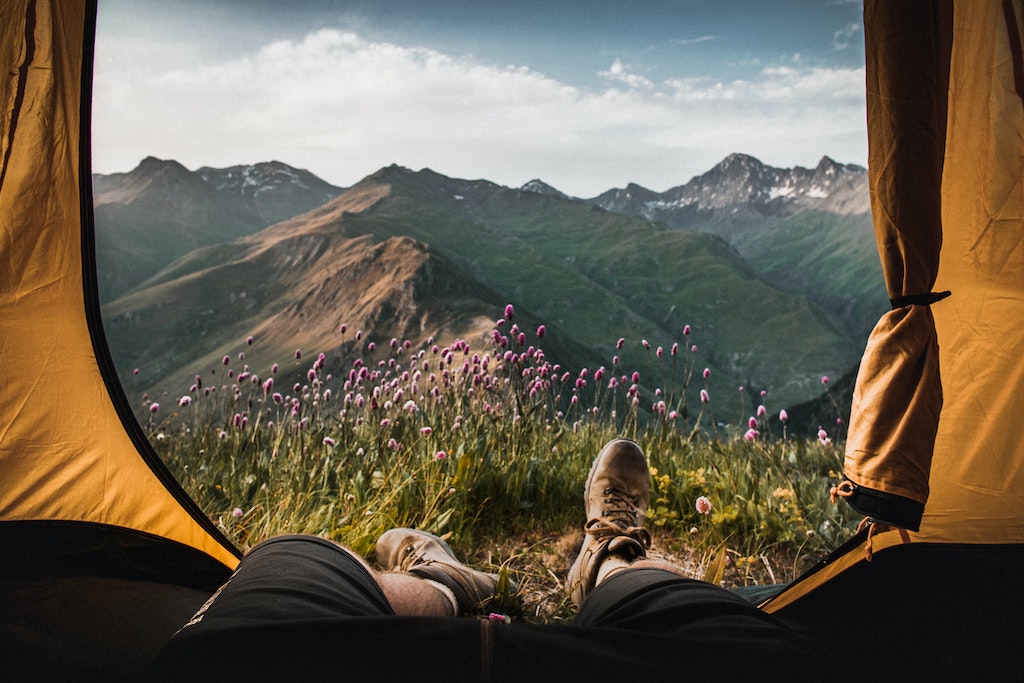Many RV and camper owners pride themselves in taking their vehicles to campgrounds and RV parks so that they can meet up with other owners, show off their tow-alongs and share experiences and ideas in a safe environment that conveniently serves their needs. At some point, however, the intrepid traveler may want to take the road less traveled and visit remote locations far from civilization and be one with nature. This is generally known as dry camping, when you stationing your vehicle without direct connections to fresh water, electricity or sewage lines. While this may seem like a foreboding thought, there are ways you can have a great time outdoors without the worries of camping off the grid. Follow these dry camping ideas and precautions to make your experience enjoyable.
With these tips on dry camping, you will be able to take total delight in a memorable adventure. The promise of a stress-free trip in gorgeous scenery can only happen with a plan in place. Now that you know what to do to make the trip possible, are you ready to go out and get in touch with nature?
- Map out possible campsites. If you have an idea of where you will be driving through, check beforehand if there are sites available. In general, most sites will be found in public lands such as natural forests and areas controlled by the federal Bureau of Land Management. The Days’ End Database (a resource for members of the Escapees RV Club) and Boondocking.org contain GPS coordinates and descriptions of locations available. Mark these sites on a topographical paper atlas and confirm with online websites such as Google Maps, noting any markers and objects that may aid in wayfinding. Select a preferred site and some alternates if you find that others are occupying it.
- Stock up on necessities. Make sure you have enough food and clothes before making the RV trip, as well as trash bags for refuse disposal. Have enough water for drinking, showering and basic rinsing, as well as a water distiller and a purifier if you plan to collect water from a lake or stream. Don’t forget to bring emergency supplies such as flashlights, batteries and a first aid kit. Bring solid dishes instead of paper plates to reduce waste.
- Check your vehicle. Remember that you will have nearly no access to maintenance facilities, so examine every component of your vehicle and see if any need replacement or lubrication before making the trip. Test out any electrical parts, check your engine fluid levels and look for leaks in water tanks. KOA provides more detailed pointers on what to look for. If you are unsure of what you are doing, don’t hesitate to hire professional help in examining your vehicle. If you are driving an RV, consider towing a second vehicle for emergency trips.
- Adjust water faucets and showerheads. Conserving water is critical when you are away from any kind of connections. If you have a shower, replace the head with a low-flowing one, preferably with a shut-off valve to hold back water while lathering. If you don’t have a shower, consider purchasing a solar shower, a specially constructed plastic bag that heats stored water when placed in the sun and releases it through a tube and showerhead. Install a low-flow aerator in your faucet to reduce output.
- Visit local establishments. Now that you on the road, visit nearby towns and see if they have a visitor’s center, ranger station or chamber of commerce and learn about conditions and updates that could affect your trip. If you can, meet up with other RVers and ask about their experiences and challenges. Inquire as to whether there is a limit on how long you can stay on public land.
- Arrive and scope early. Once you are on your way, start searching for your preferred campsite during the day. That way, if you see that someone else is occupying your chosen site, you can move along to one of your alternate sites quickly. If the site is clear, see that it is safe and suitable for you and your vehicle. Please note that the descriptions of the site can be interpreted differently, so if you are not satisfied by what you see, you do not have to stay. Be mindful of any signs stating that the location is private property. If you find such a sign, it is best to leave and not to insist on staying.
- Set up your vehicle. Once your vehicle arrives, do all that is necessary to station your camper before night falls. Detach your camper from the towing vehicle and set the brakes on both. Level your camper at this time. Keep food in sealed containers inside your vehicle to dissuade animals from making a visit to your vehicle.
- Enjoy responsibly! Now that you are at the site, be courteous to future users by keeping the site clean and disposing any refuse into the trash bags, also keeping these in locked containers. Sprinkle greywater around the site once a day to reduce dust buildup, but never dump it in a puddle, since this is illegal. Do not dump blackwater in any location other than a dump station. (Employing a composting toilet can help reduce use of the blackwater tank.) Leave the site clean and pristine once you are done. Don't forget to clean your RV trailer.
With these tips on dry camping, you will be able to take total delight in a memorable adventure. The promise of a stress-free trip in gorgeous scenery can only happen with a plan in place. Now that you know what to do to make the trip possible, are you ready to go out and get in touch with nature?
Tags:

